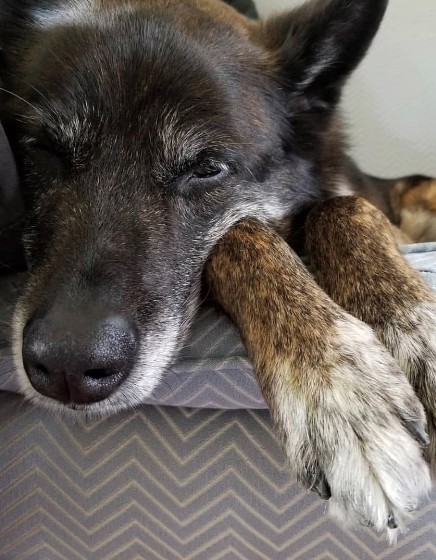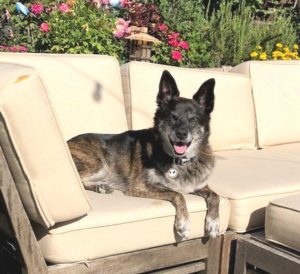
Our pet of the month for June is Tut. Tut has always been a high energy dog that plays hard. As he aged, his owners noticed that he seemed sore and had trouble jumping up into the car.
He was brought to the veterinarian so he could have his joints evaluated. Beyond physical exams, radiographs are an important tool to evaluate the bones and joints to ensure that there is not a different reason for the patient’s change in mobility. It was determined that he likely had osteoarthritis. Blood work was done and Tut was started on a pain medication called Rimadyl. Rimadyl is a non-steroidal anti-inflammatory that is approved for use in dogs. It is important to recheck blood work a few weeks after starting this medication as Rimadyl is processed by the liver and kidneys.
Unfortunately for Tut, his liver enzymes increased while on Rimadyl. It was decided to stop the Rimadyl and try another newer anti-inflammatory called Galliprant. It is important to wait 7 days when switching to another anti-inflammatory as there may be an increased chance of side effects if mixing different types of NSAIDs. Tut was started on Galliprant but it caused changes with Tut’s liver enzymes as well.
Every pet is different, and medications that work for one pet may not work or cannot be used because of other health issues. Tut’s owners were willing to try several different medications for osteoarthritis, until we were able to eventually find one that worked well for him. Closely monitoring your pet while they are on medications and giving feedback to the veterinary team is important to having the best outcome.
Arthritis can affect any joint in the body, but especially affects those joints in the spine and legs. Some dogs may have genetic risks, but prior injuries and excess weight are frequent contributors. While arthritis in dogs is one of the most common condition that causes chronic pain, it also may be difficult to notice the signs as they are subtle and dogs will adapt by restricting their movements.
Signs of arthritis:
- Stiffness when laying down and getting up
- Difficulty on stairs or slippery floors
- Cannot jump up onto furniture or into the car
- Limping or change in gait
- Soreness after exercise
- Acting ‘old’
- Reduced interest in favorite games like fetch
There are many options to manage this condition. Weight reduction for overweight pet’s is important, and addressing any specific injuries or orthopedic conditions (such as torn knee ligaments) can be beneficial when working to relieve the patient’s pain and discomfort. For many dogs, medication becomes a necessary part of their treatment plan. Fortunately, we now have many different classes of medications, and some dogs will require more than one class to manage their pain.
There are a number of non-pharmaceutical options as well:
- Joint supplements such as Dasuquin or Cosequin
- Prescription Diets for mobility
- Cold laser therapy
- Electromagnetic fields (Assisi Loop)
- Acupuncture
- Physical therapy to strengthen muscles and improve flexibility & circulation – balance boards, underwater treadmill, massage
With a little patience, we were able to find the right medication for Tut. He is now back to acting like a puppy and keeping up with his younger brother Chunk, despite being 12 years old now!
There are so many different treatment options, that with time and dedication it is possible to find the right combination for your pet.
Resources
https://caninearthritis.org/article/role-of-rehabilitation-arthritis/
https://veterinarypartner.vin.com/default.aspx?pid=19239&id=4951467

 6512 12th Ave NE
6512 12th Ave NE






Great story about Tut. It’s wonderful you could find the right medication for him to restore his mobility and enthusiasm!
Ended up here looking for some information on my pup getting ‘older’ but turns out our Mika looks just like Tut!
Do you know any information on the breed of Tut?
I’ve never seen another dog so close to ours in looks, size and stature!